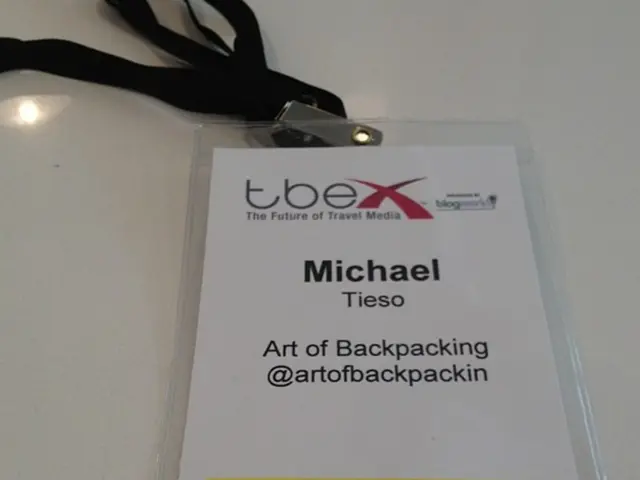Improving Academic Success with Collaborative Group Methods
In a rapidly evolving educational landscape, the integration of technology is increasingly transforming the learning experience, fostering remote cooperation among students. This approach, known as Team-Based Learning (TBL), enriches the learning process while fostering critical skills such as digital literacy and teamwork, preparing students for a dynamic work environment.
Implementing TBL effectively requires careful planning, execution, and overcoming specific challenges. Here are some best practices and strategies for addressing these challenges:
## Best Practices for Implementation
1. **Clear Goals and Expectations**: Establish clear learning objectives and ensure that all participants understand their roles and responsibilities. Use explicit criteria for team formation and task assignment to ensure diverse skill sets within teams.
2. **Preparation and Training**: Provide faculty and teachers with training on how to design and implement TBL effectively. This includes understanding the importance of team dynamics, communication strategies, and conflict resolution techniques.
3. **Active Learning Strategies**: Incorporate activities that encourage active participation, such as read-prepare-discuss methods or problem-solving exercises. Use technology to facilitate collaboration and feedback.
4. **Continuous Feedback and Evaluation**: Implement a system for regular feedback and peer evaluation to foster accountability within teams. Use formative assessments to monitor progress and adjust strategies as needed.
5. **Incentives for Collaboration**: Offer incentives for teamwork, such as group grades or recognition for collaborative achievements.
## Overcoming Challenges
### **Higher Education**
1. **Resisting Lecture-Style Teaching**: Faculty may resist moving away from traditional teaching methods. Provide support and resources to help them adapt to TBL approaches.
2. **Diverse Student Skills and Knowledge**: Students may have varying levels of preparation or knowledge. Use preparatory materials and activities to level the playing field.
3. **Technology Integration**: Technical issues can hinder collaboration. Ensure that technology platforms are user-friendly and reliable.
### **K-12 Settings**
1. **Time Constraints**: Class periods are often short, making it difficult to implement TBL effectively. Plan activities that fit within the time frame, focusing on key outcomes.
2. **Student Engagement**: Maintaining student interest can be difficult. Use engaging, real-world problems and encourage student input in project design.
3. **Teacher Collaboration**: Aligning teaching styles and schedules can be challenging. Encourage cross-disciplinary collaboration and provide time for teachers to plan together.
In both settings, it is crucial to monitor progress, address issues promptly, and continually assess the effectiveness of TBL strategies to ensure they align with educational goals.
Traditional testing methods may not adequately capture the nuances of group dynamics in team-based learning, where collaboration can enhance or inhibit individual learning. There is a growing emphasis on diverse team configurations, leveraging varied perspectives to enrich discussions and foster critical thinking.
TBL fosters critical thinking and communication skills, as students must articulate their ideas and justify their reasoning to peers. Timely feedback becomes critical in team-based learning contexts, as the reliance on group input makes it imperative for instructors to provide constructive feedback at various stages.
TBL not only reinforces content mastery but also builds a sense of community and collaborative effort within the classroom. TBL is designed to promote active learning, where students engage with each other in the learning process rather than passively absorbing information from an instructor.
Effective strategies for promoting positive group dynamics in Team-Based Learning include team-building exercises, clear roles, and guidelines for interaction and accountability. TBL is structured in three phases: individual preparation, team application, and peer evaluation.
Grading group projects can lead to biased evaluations, where one or two students disproportionately contribute to the overall outcome. Creating rubrics that accurately assess individual efforts amidst group interactions is essential. TBL has been shown to improve learning outcomes, with students in team-based environments tending to perform better on assessments than their peers in traditional learning models.
The incorporation of gamification within Team-Based Learning promotes engagement through competition and collaborative problem-solving. Team-Based Learning is anchored on several key principles that foster collaborative learning environments, including team formation, individual accountability, team autonomy, immediate feedback, and diversity of perspectives.
Learning management systems, such as Moodle or Blackboard, support course organization by enabling instructors to upload resources and create interactive activities. Transitioning from traditional learning to Team-Based Learning requires a paradigm shift in educational philosophy, enabling a more dynamic and engaging learning environment that prepares students for collaborative work settings.
High school math classes have implemented Team-Based Learning by assigning complex problem-solving tasks, allowing students to apply mathematical concepts in practical situations, enhancing engagement and retention of mathematical principles. Team-Based Learning offers numerous advantages, including promoting active engagement, developing crucial interpersonal skills, increasing accountability, and fostering richer discussions and innovative solutions.
Tools like Google Docs promote co-creation and peer feedback, allowing teams to collaborate on projects efficiently. Assessing individual contributions within a group can be challenging in team-based learning, as students may rely heavily on their peers for input and support, potentially leading to discrepancies in performance.
To effectively implement Team-Based Learning, educators should organize students into diverse teams, design specific learning activities that require teamwork, incorporate peer evaluation and accountability measures, and provide continuous feedback. In language arts classes, Team-Based Learning allows for diverse interpretations, leading to deeper comprehension and greater appreciation of the texts being studied.
Virtual meeting software, such as Zoom, supports remote collaboration, making team-based learning more accessible. Implementing Team-Based Learning in K-12 education fosters collaboration and critical thinking among students, enhancing their understanding of the material.
"Improving Student Learning Through Team-Based Learning" edited by Michael Sweet offers case studies and research findings that underscore the effectiveness of Team-Based Learning in diverse educational environments. "Team-Based Learning: A Transformative Use of Small Groups in College Teaching" by Michael Sweet and David Michael is a valuable resource for educators seeking to enhance their teaching methods.
The improvement is attributed to the peer-to-peer teaching methods inherent in collaborative learning, where students explain concepts to one another, reinforcing their understanding. Group dynamics issues, such as varying levels of commitment or differing work ethics, can hinder the effectiveness of Team-Based Learning, leading to frustration among participants and detracting from the overall learning experience.
Technology integration in team-based learning enhances collaborative educational experiences through various online platforms and tools, promoting communication, collaboration, and seamless access to instructional materials. The adaptation of assessment methods is evolving, with traditional grading systems increasingly replaced by peer assessments and reflective practices, which encourage accountability and self-evaluation within teams.
In the context of professional development, educators can leverage elearning resources to further their understanding and implementation of team-based learning strategies. This type of education-and-self-development can help them navigate the challenges associated with fostering diverse team configurations and encouraging effective teamwork skills.
To strengthen the learning process and instill critical skills in students, educators are turning to educational technology for professional development, including teamwork, digital literacy, and communication skills necessary for a dynamic work environment. This approach to e learning emphasizes the importance of continuous learning, lifelong self-improvement, and adaptation to the evolving educational landscape.




